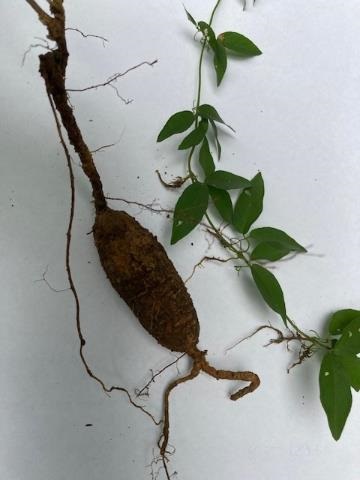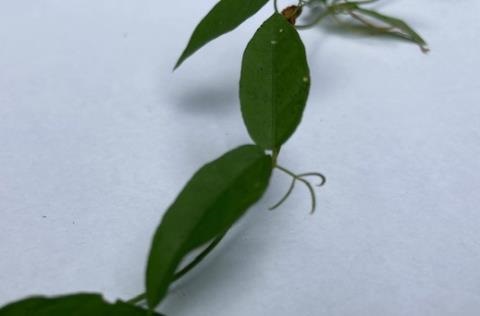Habitat
Able to withstand heavy shade or full sun, while being tolerant of frost, drought and saline conditions, Cat's Claw Creeper is a nasty character which sometimes springs up in gardens.
This vine was introduced into Australia from tropical America as a garden plant for screening trellises and walls. It has since escaped into bushland and is now declared a Weed of National Significance due to its devastating impact on native forests and waterways. Its climbing ability is second-to-none, thanks to its stiff curving tendrils or ‘cat's claws’.
Eradicate as soon as possible as it spreads rapidly and produces abundant seed which can further disperse this pest into the environment.
Description
Cat's Claw Creeper is a perennial woody vine with many stems. It can climb over shrubs, trees and structures, reaching to 30m high, smothering trees and plants underneath. On the ground it can form a dense mat, suppressing any other plant growth. The stems are woody and can grow to 15cm thick. The leaves are usually found in pairs along with its most distinctive feature - a three-pronged tendril with stiff tips that form hooks (like cat’s claws). In spring the yellow trumpet-shaped flowers appear. Cat's Claw Creeper forms long pods which contain papery winged seeds.
Cat’s Claw Creeper has an extensive root system and numerous underground reproductive tubers, which can each grow up to 40cm long. This vine can also form roots along the nodes of the stem.


Roots start to develop tubers in their second year and plants may be well established before they start to flower. Note the typical 'cat's claw' tendril found between each pair of leaflets.
Control and Removal methods
Physical removal is feasible for seedlings or small plants, as long as the roots and tubers are completely removed. Start by gently tugging on the stem and removing any roots along the nodes. Arriving at the main root system, dig down to the first tuber which can grow quite long. Dig further around to check for secondary tubers and remove all that you find.
For more established vines, cut all climbing stems well above the ground (1–2 m high) and leave the aerial parts to die. Peel the lower stems off the host, cut again as close to the ground as possible and paint the cut surface immediately with a glyphosate herbicide. Chemical control should be done in spring to autumn while this plant is actively growing. Follow up is essential as stems and tubers may resprout.